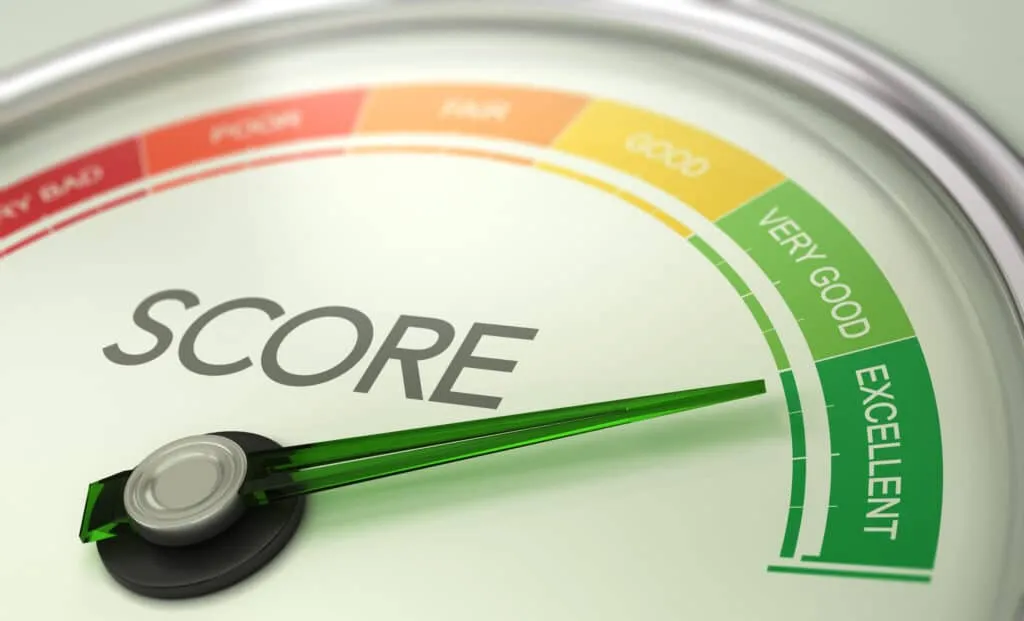How to Build Good Credit as a Newcomer to Canada

Stepping into Canada with dreams of a fresh start, building good credit as a newcomer to Canada is your financial passport to opportunity.
Credit shapes your ability to rent an apartment, secure a mortgage, or even land certain jobs.
Yet, for newcomers, the process can feel like navigating a maze without a map.
Unlike a sprint, establishing credit is a marathon, requiring strategy, patience, and informed decisions.
This guide unveils actionable, creative, and intelligent steps to help you construct a robust credit profile, tailored to the Canadian financial landscape in 2025.
Building good credit is crucial for newcomers, as it lays the groundwork for financial independence and stability.
Understanding how credit works and taking proactive steps can lead to a more secure financial future in Canada.
Why Credit Matters in Canada
Imagine your credit score as the roots of a tree: invisible but essential for stability.
In Canada, your credit score, typically ranging from 300 to 900, determines how lenders perceive your reliability.
A strong score—above 700—unlocks better loan terms, lower interest rates, and trust from financial institutions.
For newcomers, starting from scratch can feel daunting, but every action you take plants seeds for future growth.
Consider this: a 2023 Equifax Canada report revealed that 26% of newcomers struggle to access credit within their first year due to a lack of credit history.
This statistic underscores the urgency of proactive steps.
Without credit, you might face higher deposits for utilities or rejection from landlords.
So, how do you break this cycle and establish a financial foothold?
Establishing good credit is not only about accessing loans but also about building a positive reputation in the financial system.
This reputation can help you in various aspects of life, from renting a home to securing better job opportunities.
Step 1: Understand the Canadian Credit System
Knowledge is your first tool.
Canada’s credit system revolves around two major bureaus: Equifax and TransUnion.
These agencies track your credit activities, generating reports that influence your score.
Payment history (35%), credit utilization (30%), length of credit history (15%), types of credit (10%), and inquiries (10%) shape your score.
As a newcomer, your file might be blank, but that’s not a barrier—it’s a blank canvas.
Start by obtaining a free credit report from both bureaus via their websites or services like Borrowell.
Review it to ensure accuracy, even if it’s empty.
This habit sets the stage for vigilance.
Ask yourself: Why wait for a problem to arise when you can monitor your progress from day one?
Understanding the credit system will empower you to make informed decisions and take control of your financial journey.
By familiarizing yourself with the factors that affect your credit score, you can develop strategies to improve it effectively.
+ Bank of Canada Interest Rate Decision: What June 2025 Means for Your Finances
Step 2: Open a Canadian Bank Account
A bank account is your financial anchor.
Most Canadian banks, like RBC, TD, or Scotiabank, offer newcomer programs with no-fee accounts for up to a year.
These accounts are your gateway to financial products that build credit.
For example, Maria, a newcomer from Brazil, opened a chequing account with TD’s New to Canada program.
Within months, she qualified for a secured credit card, kickstarting her credit journey.
Choose a bank with branches near your home and robust online banking.
Link your account to direct deposits for income, ensuring consistent cash flow.
This stability signals reliability to lenders, laying the groundwork for credit-building tools.
| Bank | Newcomer Program Features | Eligibility |
|---|---|---|
| RBC | No-fee account for 1 year, secured credit card | Permanent residents, work permit |
| Scotiabank | StartRight program, no credit history required | Newcomers within 3 years |
Opening a bank account also helps you establish a relationship with your financial institution, which can be beneficial when applying for loans or credit products later.
Having a local bank account makes managing your finances easier and more efficient.

Step 3: Apply for a Secured Credit Card
Secured credit cards are your training wheels.
Unlike regular cards, they require a deposit (e.g., $500) that becomes your credit limit.
This minimizes risk for the bank while allowing you to demonstrate responsibility.
Use the card for small, regular purchases—like groceries or transit passes—and pay the balance in full each month.
Take Ahmed, a newcomer from Egypt.
He used a $300 secured card from Capital One for monthly subscriptions, paying it off weekly to keep utilization below 10%.
Within a year, his score hit 650, qualifying him for an unsecured card.
Many banks offer secured cards with no annual fee; compare options at sites like Ratehub.ca.
Using a secured credit card responsibly can significantly improve your credit score over time.
It’s an excellent way to establish a credit history while managing your spending.
Step 4: Diversify with Alternative Credit-Building Tools
Think of your credit profile as a recipe: variety adds flavor.
Beyond credit cards, explore tools like rent reporting services or credit-builder loans.
Services like FrontLobby allow you to report rent payments to Equifax, boosting your score.
Similarly, credit-builder loans, offered by Refresh Financial, involve fixed payments that are reported as positive activity.
These tools are especially valuable for newcomers without traditional credit.
For instance, a $1,000 credit-builder loan with monthly payments of $85 over 12 months can establish a payment history, a key score component.
Check eligibility, as some require permanent residency.
| Tool | How It Works | Cost |
|---|---|---|
| FrontLobby | Reports rent to Equifax | $10–$15/month |
| Refresh Financial | Credit-builder loan with fixed payments | Varies by loan amount |
Utilizing these alternative tools can create a well-rounded credit profile, enhancing your overall creditworthiness.
They also provide opportunities to build credit without relying solely on credit cards.
Step 5: Pay Bills on Time, Every Time
Timeliness is non-negotiable.
Payment history is the largest factor in your score, and even one missed payment can dent your progress.
Set up automatic payments for utilities, phone bills, and credit cards to eliminate forgetfulness.
If automation isn’t an option, use calendar reminders.
Explore bill payment apps like Wealthsimple Cash, which streamline transactions and offer cashback on eligible purchases.
Consistent payments signal reliability, gradually elevating your score.
Avoid maxing out credit cards; aim for utilization below 30% to show restraint.
Establishing a habit of timely payments is crucial for building and maintaining a good credit score.
It reflects your reliability and can open doors to better financial opportunities.
++ Investing in ETFs in Canada: A Step-by-Step Guide for Beginners
Step 6: Build Credit Through Everyday Actions
Credit-building isn’t limited to loans or cards.
Everyday actions, like paying for streaming services or gym memberships with a credit card, contribute to your history.
The key is consistency and moderation.
For example, use your card for a $20 Netflix subscription, then pay it off immediately.
This creates a trail of positive activity without accruing debt.
Additionally, consider adding your phone bill to your credit report through services like KOHO, which partners with bureaus to reflect timely payments.
These micro-actions accumulate, shaping a resilient credit profile.
Incorporating everyday expenses into your credit-building strategy can make the process feel less daunting and more manageable.
It allows you to build credit while maintaining your regular spending habits.

Step 7: Avoid Common Pitfalls
Newcomers often stumble into traps that hinder progress.
Hard inquiries, caused by applying for multiple credit products in a short period, can lower your score.
Space out applications by at least six months.
Similarly, closing old accounts can shorten your credit history, so keep them open, even if unused.
Another pitfall is ignoring your credit report.
Errors, like incorrect personal details, can arise.
Regularly check your report to catch discrepancies early.
Free tools like Credit Karma provide alerts for changes, empowering you to act swiftly.
Being aware of these common pitfalls can save you from setbacks on your credit journey.
Taking proactive steps to monitor your credit can help you maintain a healthy score.
Step 8: Leverage Newcomer-Friendly Programs
Canada’s financial institutions recognize the challenges newcomers face.
Programs like CIBC’s Newcomer Mortgage allow you to qualify for home loans with minimal credit history, provided you have stable income.
Similarly, BMO’s NewStart program offers tailored advice and products for immigrants.
Engage with these programs early.
Visit bank websites or schedule appointments with advisors to explore options.
These initiatives are designed to ease your transition, helping you build good credit as a newcomer to Canada while accessing essential services.
Utilizing these newcomer-friendly programs can provide significant advantages as you establish your credit.
They often come with benefits specifically designed to meet the needs of new residents.
Step 9: Plan for the Long Term
Building good credit as a newcomer to Canada is a journey, not a race.
Aim for a score above 700 within two years, but prioritize sustainable habits over quick fixes.
Regularly review your credit report, adjust spending, and explore new products as your needs evolve.
For instance, after a year of responsible credit use, consider applying for an unsecured card with rewards to diversify your portfolio.
Long-term planning also involves understanding credit’s role in major milestones.
A strong score can reduce mortgage interest rates, saving thousands over decades.
Stay informed about policy changes, like potential updates to credit scoring models, via resources like the Financial Consumer Agency of Canada.
Establishing a long-term vision for your credit can help you make informed decisions that align with your financial goals.
It encourages you to think beyond immediate needs and consider future opportunities.
Step 10: Seek Professional Guidance
Don’t hesitate to seek help.
Non-profits like Credit Counselling Canada offer free workshops for newcomers, covering budgeting and credit management.
Financial advisors at banks can also provide personalized strategies.
These resources demystify the process, ensuring you build good credit as a newcomer to Canada with confidence.
Reaching out for support and guidance can enhance your understanding of credit and financial management.
It’s a smart step toward achieving your financial goals in your new home.
Conclusion: Your Credit, Your Future
Establishing credit as a newcomer is like planting a garden: it requires care, patience, and the right tools.
By understanding the system, using secured cards, paying bills diligently, and leveraging newcomer programs, you create a foundation for financial success.
Each step forward strengthens your roots, opening doors to opportunities in Canada.
Start today—your future self will thank you.
Building good credit as a newcomer to Canada isn’t just about numbers; it’s about crafting a life of stability and possibility.
Take control, stay informed, and watch your credit flourish.
Your credit journey is an essential part of building a successful and fulfilling life in Canada.
